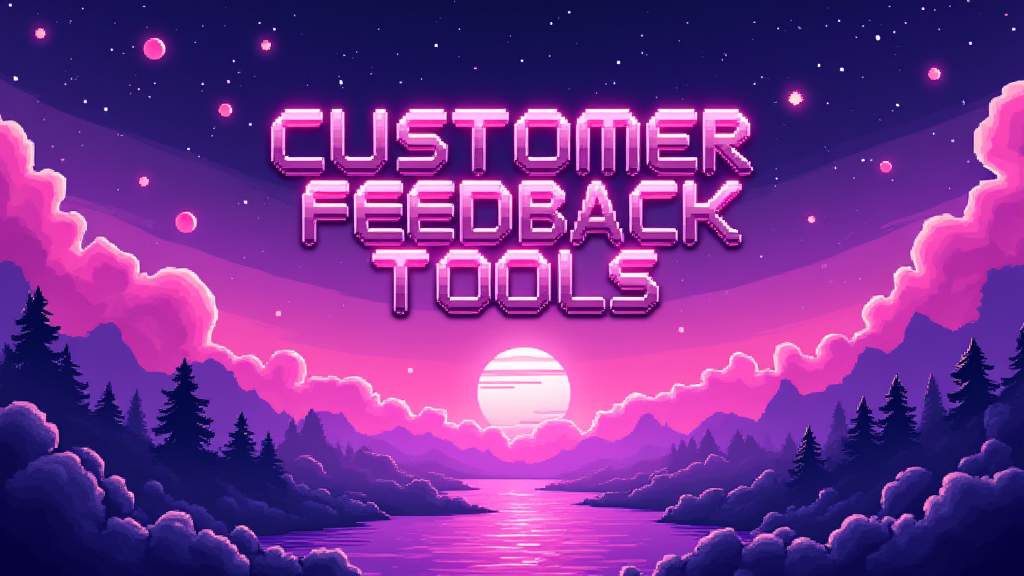Customer Feedback Tools: Enhancing User Insights

Published on: October 01, 2024
Customer feedback tools are software solutions designed to collect, analyze, and manage user opinions, suggestions, and experiences with a product or service. These tools play a crucial role in helping businesses understand their customers' needs, preferences, and pain points, ultimately driving improvements and fostering customer loyalty.
Why Customer Feedback Tools Matter 🎯
In today's competitive business landscape, understanding and acting on customer feedback is essential for success. Customer feedback tools offer several benefits:
- Improved product development
- Enhanced customer satisfaction
- Increased customer retention
- Data-driven decision making
- Competitive advantage
Types of Customer Feedback Tools 🛠️
There are various types of customer feedback tools available, each serving different purposes:
1. Survey Tools
These tools allow businesses to create and distribute surveys to gather structured feedback from customers. Examples include SurveyMonkey and Typeform.
2. Net Promoter Score (NPS) Tools
NPS tools measure customer loyalty and likelihood to recommend a product or service. Delighted and AskNicely are popular NPS tools.
3. In-App Feedback Tools
These tools collect feedback directly within a mobile or web application. UserVoice and Instabug are examples of in-app feedback tools.
4. Social Media Listening Tools
These tools monitor and analyze customer feedback across social media platforms. Hootsuite and Sprout Social are widely used for this purpose.
5. Customer Feedback Analytics Tools
These tools help businesses analyze and derive insights from collected feedback. Examples include Qualtrics and Medallia.
Key Features of Customer Feedback Tools 📊
When selecting a customer feedback tool, consider the following essential features:
- Multi-channel feedback collection: Ability to gather feedback from various sources
- Real-time reporting: Instant access to feedback data and analytics
- Customizable surveys: Flexibility to create tailored questionnaires
- Integration capabilities: Seamless connection with other business tools
- Sentiment analysis: Automatic categorization of feedback as positive, negative, or neutral
- Action management: Features to assign and track follow-up tasks based on feedback
Implementing Customer Feedback Tools Effectively 💡
To maximize the benefits of customer feedback tools, consider these best practices:
- Set clear objectives for your feedback collection efforts
- Choose the right tool(s) based on your specific needs and budget
- Train your team on how to use the tools effectively
- Regularly review and act on the feedback collected
- Close the feedback loop by communicating actions taken to customers
Challenges in Using Customer Feedback Tools 🚧
While customer feedback tools offer numerous benefits, there are some challenges to be aware of:
- Ensuring data privacy and compliance with regulations like GDPR
- Avoiding survey fatigue among customers
- Managing and prioritizing large volumes of feedback
- Interpreting feedback accurately and deriving actionable insights
The Future of Customer Feedback Tools 🔮
As technology evolves, customer feedback tools are expected to incorporate more advanced features:
- AI-powered sentiment analysis and predictive analytics
- Integration with emerging channels like voice assistants and IoT devices
- Enhanced personalization of feedback collection methods
- Improved visualization and reporting capabilities
By leveraging customer feedback tools effectively, businesses can gain valuable insights, improve their products and services, and ultimately drive growth and customer loyalty.
Questions to Consider for Your Sales or Marketing Stack 🤔
- What are our current methods for collecting customer feedback?
- How can we integrate customer feedback tools with our existing CRM and marketing automation systems?
- Which types of customer feedback tools would be most beneficial for our specific industry and target audience?
- How can we ensure that feedback collected is acted upon and translated into tangible improvements?
- What metrics should we track to measure the success of our customer feedback initiatives?

















